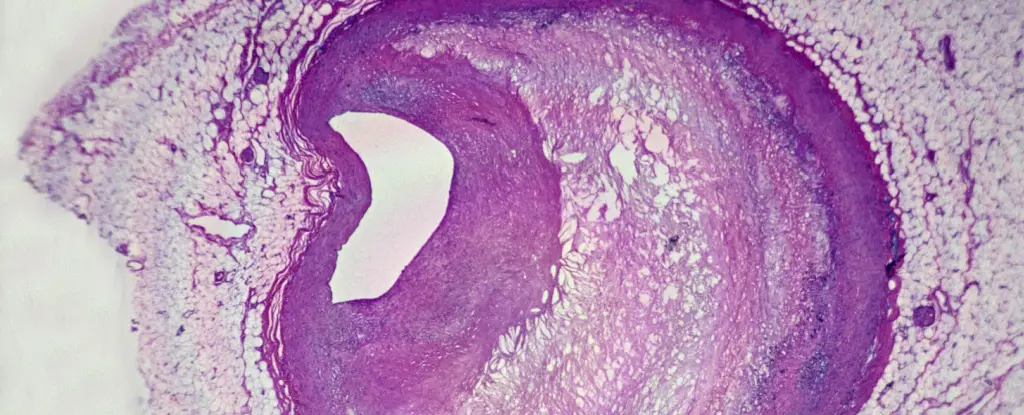The proliferation of plastics in our environment has reached alarming levels, and recent studies indicate that these ubiquitous materials may be infiltrating the human body in ways previously unimagined. Microplastics, tiny plastic particles that result from the degradation of larger plastic items, have been detected in various organs, including the placenta. This unexpected intrusion into human biology raises serious questions about the potential health risks these particles pose. While researchers have begun investigating the implications of microplastics through laboratory experiments focusing on organ replicas and animal models, the complexity of real-world exposure necessitates a more nuanced understanding of how these materials may ultimately affect human health.
Research from Italy shines a light on the correlation between microplastics and cardiovascular health, particularly through a small study involving patients undergoing carotid endarterectomy—a procedure designed to clear blocked arteries and reduce the risk of stroke. Led by Raffaele Marfella from the University of Campania, the study involved the surgical removal of fatty deposits from clogged arteries, which were subsequently analyzed for microplastic contamination. The results were striking: nearly 60% of the analyzed plaques contained detectable amounts of polyethylene, while 12% harbored polyvinyl chloride (PVC) particles.
Given the extensive use of polyethylene in common plastic products like bags and bottles, and the prevalence of PVC in various applications from construction to packaging, the findings highlight a concerning trend of microplastic accumulation in human tissues. The presence of these materials becomes particularly alarming when considering their implications for cardiovascular health. Existing laboratory studies hint at possible negative impacts on heart function, suggesting that exposure to microplastics may lead to inflammation and oxidative stress within heart cells—a mechanism that could contribute to serious cardiovascular conditions.
The longitudinal aspect of Marfella’s study, which spanned 34 months and followed 257 patients, provided a unique opportunity to assess health outcomes in connection with microplastic presence. The results were revealing: individuals with microplastics in their arterial plaques were found to have a staggering 4.5 times increased likelihood of experiencing significant cardiovascular events, such as strokes or heart attacks, compared to their counterparts without detectable microplastic levels.
This compelling statistic raises imperative questions about causation versus correlation; while the study establishes a clear association between microplastic presence and adverse cardiovascular outcomes, the complex nature of individual health profiles must be considered. The research did not account for various other contributing factors, such as lifestyle choices or environmental pollutants like air quality and smoking, which can equally affect heart health.
One critical aspect of this discourse is the methodology employed in isolating and analyzing microplastics and their potential effects. Employing advanced techniques like pyrolysis-gas chromatography-mass spectrometry allowed researchers to accurately identify and quantify the microplastic concentrations in tissue samples. Coupled with stable isotopes analysis to differentiate between human tissue and that of petrochemical-derived plastics, this meticulous approach adds credibility to the findings.
However, observational studies such as this inherently come with limitations. The inability to definitively ascertain that microplastics directly cause cardiovascular health issues means that further research is necessary. Toxicological studies examining the actual mechanisms of microplastic-induced cellular damage must be prioritized to establish a clearer picture of the risks associated with long-term exposure.
The implications of the study extend beyond individual health concerns; they touch on larger issues of environmental health and pollution. With plastic production soaring and recycling rates stagnating, the accumulation of microplastics in our ecosystems—and consequently within our bodies—must provoke public discourse and policy change. Health experts like Philip J. Landrigan emphasize the urgency of reducing exposure to microplastics and call for comprehensive strategies to tackle plastic pollution.
As scientists continue to unveil the potential health impacts of microplastics, individuals must be made aware of their prevalence and possible consequences. Reducing reliance on single-use plastics and advocating for stricter regulations on plastic production and disposal could play a vital role in curbing this environmental crisis.
The association between microplastics and cardiovascular health outcomes is a burgeoning area of research that demands attention and action. As investigations into this nexus continue to unfold, the health implications of our plastic-laden environment will require diligent scrutiny and proactive approaches to safeguard human health and the integrity of natural ecosystems.


Leave a Reply